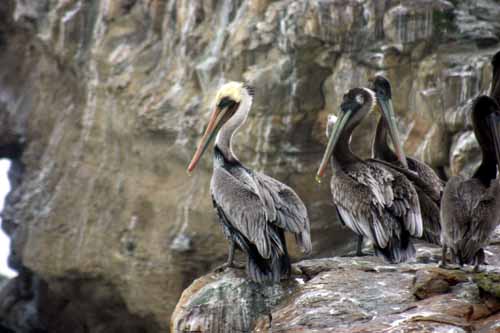


Soaring in “flight formations” above the ocean on its 6-foot wingspan, plunging straight down into the water in a spectacular dive, swallowing fish its large pouch of a bill – these are all very normal behaviors expected of a brown pelican. But wandering alone around inland parking lots, back alleys and farmfields, appearing skinny and sickly, or even turning up dead – most decidedly not normal behavior. Which is why record numbers of sick and dead brown pelicans since late December, which have been filling wildlife rehabilitation centers along the California coast to their capacity since late December, have many researchers puzzled and worried. The California population of these great birds are federally listed as endangered, having been nearly wiped out by DDT before the pesticide was banned in 1972. They have since made a successful recovery, but the recent spike of birds exhibiting odd behaviors and turning up dead has scientists scrambling to find a cause. Some birds tested positive for domoic acid, a neurotoxin produced by photosynthetic algae, but their symptoms do not include the seizures normally triggered by domoic acid poisoning, leading scientists to believe this may only be part of larger problem.
People are reporting that affected pelicans look emaciated and disoriented, and the usually-social birds are showing up alone in unusual places far from home. If you see any sick or dead pelicans, please contact WildRescue at 866-WILD-911.


